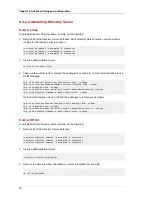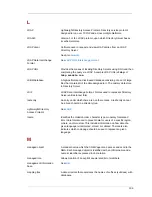
Chapter 8. Migrating from Previous Versions
94
Option
Alternate Options
Description
then all its replicas must be
reinitialized.
--debug
-d[dddd]
This parameter turns on
debugging information. For the
-d
flag, increasing the number
of d's increases the debug
level.
--logfile
name
-l
This parameter specifies a log
file to which to write the output.
If this is not set, then the
migration information is written
to a temporary file, named
/
tmp/migrate
XXXXX
.log
.
To disable logging, set
/dev/
null
as the logfile.
Table 8.1. migrate-ds-admin Options
migrate-ds-admin.pl
allows the password parameter to be provided on the command line, similar
to the
setup-ds-admin.pl
script. The arguments set the section, parameter, and value of
.inf
parameters in the following form:
section.parameter=value
The only required argument is the Configuration Directory Server administrator password
(
ConfigDirectoryAdminPwd
):
/usr/sbin/migrate-ds-admin.pl --oldsroot /opt/redhat-ds
General.ConfigDirectoryAdminPwd=password
To avoid having this password in the clear on the command line, you can use a
.inf
file with the
migration script that gives the administrator's password:
/usr/sbin/migrate-ds-admin.pl --oldsroot /opt/redhat-ds --file=/export/example.inf
The
.inf
would have the following two lines:
[General]
ConfigDirectoryAdminPwd=
password
The migration script takes all of the other settings from the old configuration files in the old server
root, specified in
--oldsroot
. Any other argument passed in the command line or listed in an
inf
file, such as those used with the
setup-ds-admin/pl
script, is ignored. The Directory Server
configuration parameters are only taken from the old instance. It is not possible to change the
configuration settings, such as the hostname or port, using the migration script.
















































